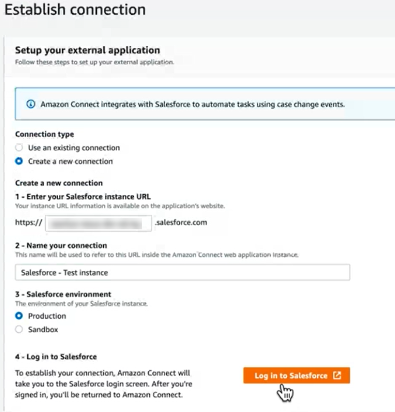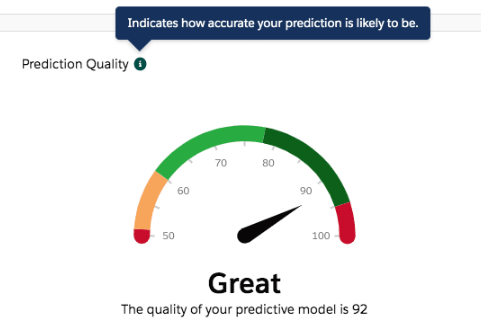Rohini Isarapu
Google, Chicago, 60661, United States of America
Correspondence to: Rohini Isarapu, Google, Chicago, 60661, United States of America.
| Email: |  |
Copyright © 2024 The Author(s). Published by Scientific & Academic Publishing.
This work is licensed under the Creative Commons Attribution International License (CC BY).
http://creativecommons.org/licenses/by/4.0/

Abstract
This paper demonstrates how to technically implement Salesforce Einstein AI with predictive lead scoring for the telecom industry, using integrated data sources from Amazon S3. It also delves into how much machine learning models could be improved in sales processes and strategies for acquiring customers. The paper focuses on recording real-time ingestion of data, model training, and deployment within the Salesforce ecosystem to translate it into quantitative results on performance improvement.
Keywords:
Salesforce Einstein AI, Amazon S3, CRM, Data Ingestion, Data Integration, Lead Scoring, Data Processing, KPI
Cite this paper: Rohini Isarapu, Implementing Salesforce Einstein AI for Lead Scoring in Telecommunications, Science and Technology, Vol. 14 No. 1, 2024, pp. 12-15. doi: 10.5923/j.scit.20241401.03.
1. Introduction
Correct scoring is the key to managing sales efforts and resources in a competitive world of telecommunication. The research goes on to explain how the Salesforce Einstein AI implementation has improved the process of lead scoring using historical data stored in Amazon S3, making it more effective and dynamic in this approach.
2. Literature
Other emerging studies are there like that of a possible AI in sales processes. On one hand, Syam and Sharma Jonathan wrote about AI transforming B2B sales, and on another note, work by Järvinen and Taiminen touches base on how through content marketing, the combination of marketing automation and CRM can happen.However, in the telecommunication sector, research on the usage of Salesforce Einstein AI has yet to be pursued, and hence it serves as the premise for this study.II. Ingesting Data to Amazon S3A. Data Preparation with Amazon S3I designed our data in Amazon S3 to include:1. Prior interaction history like calls, emails2. Meeting notes and conclusions3. Historical conversion statistics4. Demographics of customers5. Patterns of Consumption of Services6. Contract Renewal InformationThe entire dataset was used in this regard to draw a complete picture of customers' interactions and behaviors. | Figure 1. A hierarchically structured Amazon S3 bucket |
B. Setting up Salesforce ConnectI then integrated Amazon S3 by using Salesforce Connect.1. Developed the external data source in Salesforce and provided the endpoint Amazon S3.2. IAM roles enabled user authentication to provide stronger security.3. Mapped external objects into the S3 data structure, defining and ensuring that all related fields were present. | Figure 2. Salesforce Connect configuration page after configuration, providing connection settings to Amazon S3 |
C. Synchronization - Data ProcessingData consistency is guaranteed since the implementation is by bidirectional sync:1. T&D used the initial bulk data load with the Salesforce ETL tools until it could be accomplished.2. Designed custom Apex triggers for real-time updates.3. Added error handling to send automatic alerts in the case of a failure of sync.This was done to make sure that Salesforce Einstein AI was always updated with the most current data but the data's integrity was maintained. | Figure 3. Salesforce data sync job configuration and logs |
III. Salesforce Einstein AI IntegrationA. Einstein Lead Scoring Enablement1. Activated Salesforce Einstein Lead Scoring.2. Defined a relevant field selection for scoring that comprised: Human Interactions, Usage metrics of the services, Value of contract, Geographical location, Size of the company.3. The defined conversion event was "Closed Won opportunity with contract value > $10,000".These decisions are quite evidently the clear conclusion one reaches based on the overall sifted historical data, that there does exist a very high correlation of these factors to successful conversion in the telecom sector. | Figure 4. Einstein Lead Scoring setup page in Salesforce |
B. Model TrainingThe Einstein AI model was trained on:1. Aggregation: 18 months of historical lead data (about 50,000 leads)2. 3,000 quality conversions3. Total duration of training: 364. Algorithm Selected: Gradient Boosting Machine (Chosen by Einstein automatically) | Figure 5. Einstein model training status and quality indicators |
C. Personalize the ModelVale included our part in fine-tuning the model for the specific requirements in telecommunications.1. Adjusted the field importance given the service usage metrics by setting it correctly to increase the probability of renewal of the contract.2. Custom fields for telecom-specific metrics ARPU potential - Average Revenue Per User Use Bundle Propensity.These were essential extensions that greatly increased the model's predicting capacity, given the high level of detail that our reports support for a single. | Figure 6. Salesforce Lead page layout showing Einstein score component |
V. Deployment and IntegrationA. Salesforce UI IntegrationI built lead score in Salesforce UI:1. Added lead score components on page layouts.2. Developed custom list views based on the stratification of lead scores.3. Set up automatic notifications when leads score over 80.4. Salesforce Opportunities page layout showing Ethan's score field.B. Process Builder for AutomationI set up automated workflows based on the lead scores:1. A flow for Process Builder has been created in my Developer Edition version of Salesforce, with criteria to run on the change of the score.2. Auto-assign leads based on score bank thresholds:• 90100 pts: Sent to the senior sales representative for immediate follow-up• Scores 7089: Connected to normal sales queue• Scores below 70: The chemical hydrogenation of marketing is3. Running segmented email campaigns according to various scoring groups. | Figure 7. Process Builder flow for lead score-based automation |
VI. Performance Analysis and Iteration A. Performance Monitoring of the Model I evaluated the model's performance for up to 6 months: 1. Reviewed Albert Einstein's in-built performance metrics weekly. 2. Analyzed the relationship between the lead scores with actual conversions. 3. Generated input from the sales teams on the relevance of scores. Key Performance Indicators (KPIs) • Lead conversion rate • Time to conversion • Average deal size • Sales team productivity | Figure 8. Einstein Lead Scoring performance dashboard |
B. Results After I had implemented Einstein Lead Scoring, there occurred some great improves 1. Improved the conversion rate of their leads by 28% from 5.2% to 6. 2. The Average conversion time decreased from 45 days to 30 days, which is 15 days. 3. Improved average deal size by 12% (from $8,500 to $9,520).4. Sales team indicated that lead qualification time was reduced by 35%. C. Iterative improvement I have done iterations on model refinement. 1. Re-trained the model every month with fresh data. 2. Analysis of performance was adjusted field-important. 3. Sales teams were regularly trained to score enhanced every two weeks.
3. Benefits and Challenges
Salesforce Einstein AI has driven to enhancement in the effectiveness and adequacy of the deals handled by giving precise lead scores, hence clearing the way to prioritize leads that are more likely to change over. Joining Amazon S3 to Salesforce by means of Salesforce Interface guaranteed genuine time information overhauls and synchronization driving to an advanced Information Integration and Genuine Time handling. This will too robotize and streamline the deals prepared. The adequacy of the executed arrangements is supported by change in key execution indicators (KPI).However, there are a few restrictions and disadvantages when it comes to utilizing Salesforce Einstein AI. Salesforce Einstein AI is intensely subordinate on the information quality coming in from Amazon S3. The forecasts can be wrong if the information is not total or wrong. Any machine learning show comes with predisposition and decency. The models moreover require to be upgraded based on the client and advertise patterns instead of fair retraining.While AI is one conclusion of the sword, the other range which cannot be overlooked is Information Integration. With the volume of information developing, the integration between Amazon S3 and Salesforce can get more complex too driving to execution issues.
4. Conclusions
The use of Salesforce Einstein AI for lead scoring in combination with the Amazon S3 data placed the potential to make huge strides in our efforts to increase sales efficiency in our telecommunications venture. Empowered by machine learning and fueling the full data set, I could correctly prioritize leads and allocate resources accordingly. Future studies can explore more the integration and use of other data sources, such as the interactions in social media, industry-specific data, and economic indicators. Further study into concatenating more AI techniques, specifically deep learning models, could be more appropriate for even more predictive power.
References
| [1] | Dutta, S. K. (2024). Implementing the Salesforce Enablement Playbook: A Guide to Best Practices and Organizational Success. The American Journal of Engineering and Technology, 6(07), 13-23. https://doi.org/10.37547/tajet/Volume06Issue07-03. |
| [2] | Kaliuta, K. (2023). Personalizing the user experience in Salesforce using AI technologies. Computer-Integrated Technologies: Education, Science, Production, (52), 48-53. https://doi.org/10.36910/6775-2524-0560-2023-52-06. |
| [3] | Tirkkonen, T. (2021). Improving Customer Experience with Artificial Intelligence, Data Analysis, and Automation in Azets. https://urn.fi/URN:NBN:fi:amk-2021082517139. |
| [4] | Syam, N., & Sharma, A. (2018). "Artificial Intelligence in Sales: Transforming B2B Sales Strategies. https://www.sciencedirect.com/science/article/abs/pii/S0019850117302730. |
| [5] | Järvinen, J., & Taiminen, H. (2016). "The Role of Marketing Automation in CRM Integration. https://www.sciencedirect.com/science/article/abs/pii/S0019850115300018. |
| [6] | Ledro, Cristina & Nosella, Anna & Vinelli, Andrea. (2022). Artificial intelligence in customer relationship management: literature review and future research directions. Journal of Business & Industrial Marketing. 37. 48-63. 10.1108/JBIM-07-2021-0332. https://www.researchgate.net/publication/359813862_Artificial_intelligence_in_customer_ relationship_management_literature_review_and_future_research_directions. |
| [7] | Barocas, S., & Selbst, A. D. (2016). "Big Data’s Disparate Impact." California Law Review. https://papers.ssrn.com/sol3/papers.cfm?abstract_id=2477899#paper-citations-widget. |
| [8] | Roy, Michael. (2017). Cathy O’Neil. Weapons of Math Destruction: How Big Data Increases Inequality and Threatens Democracy. New York: Crown Publishers, 2016. 272p. Hardcover, $26 (ISBN 978-0553418811). College & Research Libraries. 78. 403-404. 10.5860/crl.78.3.403. https://www.researchgate.net/publication/314165204_Cathy_O'Neil_Weapons_of_Math_ Destruction_How_Big_Data_Increases_Inequality_and_Threatens_Democracy_New_York_ Crown_Publishers_2016_272p_Hardcover_26_ISBN_978-0553418811. |
| [9] | Integrating Data Science with Cloud Computing: Opportunities and Challenges. (2024). JOURNAL OF RECENT TRENDS IN COMPUTER SCIENCE AND ENGINEERING (JRTCSE), 12(2), 40-53. https://jrtcse.com/index.php/home/article/view/JRTCSE.2024.2.5. |











 Abstract
Abstract Reference
Reference Full-Text PDF
Full-Text PDF Full-text HTML
Full-text HTML